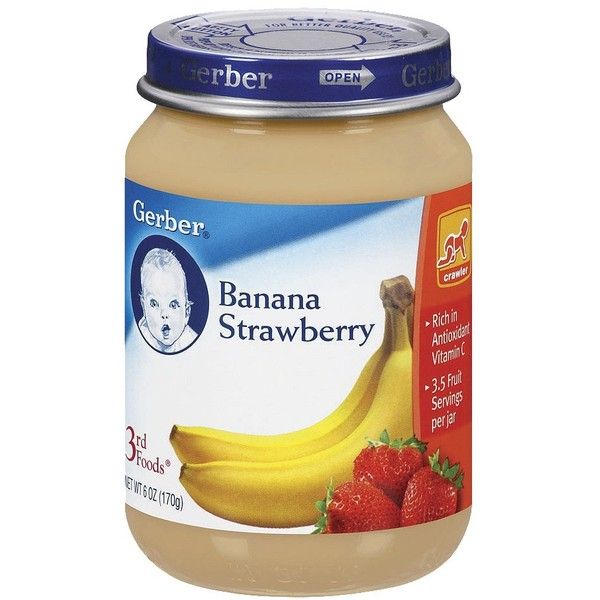Soft foods for babies with no teeth
125 first foods for babies with no teeth
by Jo
Can you imagine eating food without any teeth? Just with your gums alone? I surely find it hard to picture, but we were once like our little ones. Toothless, like a 100 year old grandma. Luckily, there are first foods for babies with no teeth. And I found 125 of them for you to read about.
PIN IT FOR LATER
The original article was written back in 2018. This is a 2021 updated version.
Since then, I have re-written and updated this post to reflect the changes I have gone through when it came to my own beliefs/thoughts and how I word things when talking about feeding kids. As such, the remains of the original article can be seen in the comments section. Word of caution, it’s not something that makes too much sense anymore and some parts I am not very proud of. I even considered deleting the comments altogether, but that doesn’t seem just right either. Either way, I hope this article helps you, even a bit.
Yes, the Pinterest pins show blueberries and they are a choking hazard, but do read the entire post. I have tried to give suggestions for each type of food so as to make them safe even for little ones.
If I missed anything, give me a shout.
But how can babies even chew without teeth?
Well, the truth is, they don’t need teeth to chew.
Chewing involves movements of the jaw, tongue and cheek. Teeth are used later on to break up more complex fibres.
This is technically done with the teeth that are more at the back of the mouth, called molars. The first molars show up somewhere between 13 and 19 months old, as you can see from the graph below.
So if we were to wait that long before we gave our little ones any food that can be easily munched on with the gums, then we would seriously endanger his or her capabilities of dealing with food (not to mention the fact that after around 8 months, the gag reflex moves further down the tongue and babies might experience a higher risk of choking if they are not accustomed to table foods yet).
Furthermore, babies are already experienced in munching away, because they would have spent a lot of time already with their fingers in their mouth, biting toys and other objects.
So encourage them to explore these with their lips, tongue and jaw, at the same time being careful of any pieces that might come off and increase the risk of choking.
So, assuming little one doesn’t have any teeth yet, what can I give him?
See the list below.
But before anything else, make sure baby meets the three signs he or she is ready to begin in the first place. I cannot stress this enough, guys, and it will save you lots of trouble down the road.
There was a time when the recommendations said to start solids at 4 months+ and I’m not sure that all the baby food manufacturers have come up-to-date with the current official advice regarding infant feeding. Always watch the signs in your baby and judge whether he or she is ready. This usually happens at around 6 months, give or take.
This usually happens at around 6 months, give or take.
Here you go, some ideas of first foods for babies with no teeth. I also added some notes and suggestions of serving for some of them. This is regardless of the method you use, baby led weaning or traditional. At some point, you’ll have to start giving them table foods.
And because I’m a fan of food groups, I have split them accordingly, for easier reference.
Note: please be aware of choking hazards. I find this article sums up pretty well what are the foods you need to pay extra attention to. As your little one develops his ability to chew, you need to be careful, teeth or no teeth.
Fruits and veggies
As a general rule, go for the ripest you can get, in the beginning, as these are usually softer for babies just starting out.
- Avocado. Serve as is, sliced into wedges, or served on toast, mashed, with an egg on top. You can also try a guacamole recipe, which is basically adding some tomato, red onion, a bit of pepper and some lemon juice to a mashed avocado.
 For an easier grip, you can toss it through some breadcrumbs or ground nuts.
For an easier grip, you can toss it through some breadcrumbs or ground nuts. - Banana. Serve as is, sliced or mashed. Here is a tip on how to offer it if baby is at the beginning, doing baby led weaning and has tiny hands. Also, here’s my recipe of baby’s chocolate you can make with banana and avocado.
- Apricot. Pick a softer variety, the riper, the better. Cut into wedges or mash.
- Tomato. Try serving them as such or on top of a pizza toast (just a slice of toast, with some mozzarella and tomatoes and baked for 10 minutes in the oven). My youngest sometimes enjoys it cut wedge-style.
- Peach. Extra ripe are usually softer.
- Mango. Go for the ripe ones.
- Strawberry. Remove the hull (the leafy and usually white part on top) before giving it to baby. Halved would be best. The bigger ones even cut into 4 pieces.
- Watermelon. Melts in the mouth. Remove the seeds and only give the red parts to baby.
- Pear. Peel it and if it’s too hard, you can bake it in the oven for a while, with cinnamon on top.

- Apple. Peel and cook it in the oven, like the pear, or shred it on a grater (I used to do this in the beginning when Emma was small; the finer side of the grater also turns the apple into applesauce).
- Muskmelon.
- Honeydew melon.
- Carrot. Steam, boil or bake in the oven to make it soft. Don’t offer raw to babies just starting out.
- Cauliflower. Steam, boil or bake in the oven with some seasoning on top.
- Broccoli. Here are 10 basic techniques for cooking broccoli from scratch, explained in-depth. Plus, you’re getting a free cheatsheet with the 3 ingredients that make broccoli taste good.
- Potato. Boil, bake or even steam until very soft.
- Sweet potato. Cook in the same way as a normal potato.
- Pumpkin. Bake in the oven until soft.
- Zucchini. Baked or boiled until it’s soft. Also grated works really well, incorporated in baked batters.
- Beetroot. Steam or boil. Be careful, though, as it contains a high amount of nitrates and it is not ok for baby to have in big quantities or too often.
 If you offer a varied menu, it shouldn’t be a problem.
If you offer a varied menu, it shouldn’t be a problem. - Grape. Cut them in quarters lengthways. Use this if you’re short on time.
- Satsumas or easy peelers. Cut in half for safety.
- Clementines.
- Raisins. If you leave them to hydrate in water for 1 hour or so they should give up their sweetness. They are a choking hazard as per the link I shared above, so pay extra attention. Better incorporate them in baked foods.
- Blueberry. Smash/squish them for safety or cut them in half.
- Blackberry. I would halve these in the beginning, as there are some quite big.
- Cucumber. I would only offer the middle part in the beginning, as it’s softer and easier to manage for babies just starting out.
- Peas. Great for improving that pincer grasp.
- Sweetcorn.
- Baked beans. Great source of iron.
- Plum.
- Kiwi.
- Dried apricots. Great source of iron, like any dried fruit, really. A bit on the sweet side, so be mindful of that.

- Cherries. Cut in half or quarters.
- Sour cherries. Serve the same as cherries.
- Pineapple.
- Orange. Cut the pieces in half or more.
- Raspberries.
- Olives. Beware of how salty they are. If left in water, they will lose their saltiness.
- Papaya.
- Dried cranberries. Same as raisins, so better incorporate them in a batter/dough.
- Parsnips. Boil, steam or bake in the oven with some seasoning on top. You can remove the center which is usually harder.
- Butternut squash. Bake or steam.
- Bell pepper. Bake or boil.
- Green beans. Boil or steam.
- Chickpeas. Best boiled or turned into hummus or falafel.
- Onion. Boiled or baked.
- Turnips. Boiled until soft. You can make a veggie broth by boiling most of the hard veggies.
- Cabbage. Boiled or baked.
- Mushrooms. Make a sauce for pasta or bake them in the oven.
- Lentils. Turn them into soup or stews.
- Eggplant.
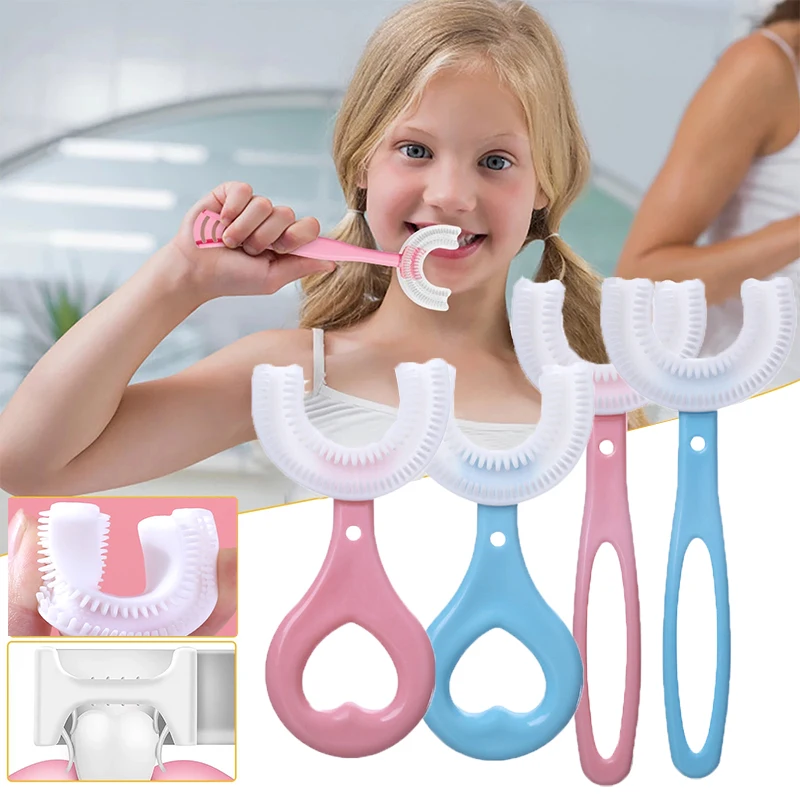 Baked in the oven is your best bet.
Baked in the oven is your best bet. - Asparagus. Can be a bit hard, but baby can munch away if properly cooked, like in the oven or steamed.
- Edamame. Never cooked them, but I guess either boiled or steamed.
- Kaki fruit.
- Lychee. Just make sure to peel the outer shell.
- Grapefruit. Cut each slice in three smaller pieces or more, depending on size.
- Pomelo. Cut each slice in multiple pieces.
- Lemon. My youngest loves his lemons cut into wedges and he just sucks at the pulp.
- Figs
- Passion fruit
- Yam. It’s a root vegetable and can be cooked in a similar way to a sweet potato.
- Brussel sprouts. Boiled, steamed or baked with seasoning.
- Nectarine. Go for riper ones and cut into wedges.
- Ugli fruit.
- Plantains. They look like bananas, but you have to cook them. They come from Jamaica, I believe.
Related posts
- 14 smash cake ideas – healthy, no sugar
- Blueberry galette (a recipe great for blw)
- 33 tips to easily end picky eating for good
- 5 alternatives to baby cereal that won’t break the bank + 1 tip
- Why you should not feed your baby smoothies, overnight oats, maple syrup and other foods
- Bread and butter pudding (baby friendly, also great for babies with no teeth)
Meat/poultry/fish
- Salmon.
 I usually bake it in the oven, wrapped loosely in baking paper or foil, for around 20 minutes.
I usually bake it in the oven, wrapped loosely in baking paper or foil, for around 20 minutes. - Cod. Cook the same way as salmon.
- Haddock.
- Mince meat. You can cook some meatballs.
- Steak. Serve in shredded strips, like the chicken.
- Chicken. Serve in shredded strips for babies to suck on and munch away later on.
- Tuna. I am guilty of buying cans of it, but if you can bake it from scratch, that’s even better. Squeeze a bit of lemon to give it some flavour.
- Crab. If your little one is not allergic to seafood, you can give it a go.
- Prawns/shrimp. Great finger food.
- Homemade sausages.
Breads/cereal
- Bread. To prevent it from sticking to the roof of the mouth, toast it. Or make some french toast.
- Rice. Great in rice puddings.
- Porridge
- Porridge fingers
- Millet. Boiled in milk or turned into a pudding (see my recipe here)
- Quinoa.
 Boiled and eaten as a side or added to porridge, for example.
Boiled and eaten as a side or added to porridge, for example. - Amaranth. Same as quinoa.
- Buckwheat. Same as the above.
- Semolina pudding.
- Spaghetti
- Pasta. Macaroni, penne, fussili or bowtie shapes work well for beginners.
- Noodles
- Homemade pizza
- Polenta
- Cous-cous
- Naan bread
- Pitta bread
- Tortillas
- Rice cakes. Go for the lowest salt option.
- Shreddies. Simple, no flavor, no added salt or sugar, just 100% wholegrain. Serve in milk.
- Focaccia
- Chapatti fingers (an Indian flat bread)
Eggs (in the UK, those that have a lion stamped on the shell are salmonella-free, therefore the yolk can be left runny when cooked – otherwise please cook the yolk completely)
- Boiled eggs
- Poached eggs (only in the UK)
- Fried eggs (just don’t use oil and fry in a non-stick pan)
- Scrambled eggs
- Omlette
- My baked omlette
Dairy
- Yoghurt
- Cheddar cheese.
 Just watch out for salt and the amount present. Grated is best at the beginning.
Just watch out for salt and the amount present. Grated is best at the beginning. - Mozarella. Choose the lowest salt option.
- Sana. It’s an Eastern European type of dairy, similar to yogurt, but slightly drinkable.
- Kefir. Similar to sana. You can find them in the European section in the supermarket.
- Curd cheese. I have a recipe for it here. It’s a no-salt version of cheese, perfect for babies.
- Cottage cheese. Just make sure the salt levels are okay.
Others
- Tofu. Just watch out for the salt content.
- Homemade muffins (try this carrot muffins recipe)
- Homemade pinwheels
- Homemade banana bread
- Homemade biscuits (easiest recipe: 100 g flour, 100 g butter and 100 g of homemade curd cheese or ricotta cheese; everything mixed and baked in the oven)
- Pancakes
- Waffles. Here’s a basic recipe to follow, which is infinitely customizable. A bit of waffle theory never hurt.

- Fritters. I have a recipe here, very adaptable to what you have in your pantry.
- Homemade nuggets
- Any homemade cake-like consistency, as long as there is no sugar, maple syrup, honey (if baby is under 1 year old), whole nuts, etc.like this baked oatmeal cake.
- Homemade popsicles or anything that’s made out of fruit and yogurt and frozen.
- Peanut butter. It is best to spread it on toast or on slices of banana. Just make sure it’s 100% nuts.
- Almond butter. Same as peanut butter.
- My apple pudding
BONUS:
126. 2 ingredient cookies. The easiest snack ever. Pair it with some dairy and you’re good to go.
127. 3 ingredient pancakes. The fluffiest and easiest pancake recipe out there. Make sure to read my notes on timing and flipping and why those are the key elements for the fluffiness.
128. Spiced biscuits. I think these are great for when little ones are teething.
129. Easy scones. With only 3 ingredients at the base, these are soft and fluffy. Don’t overmix the batter though.
Don’t overmix the batter though.
130. A kid friendly brownie with a secret nutritious ingredient.
You are probably thinking: is there anything she hasn’t mentioned?
In fact, I haven’t mentioned the leafy vegetables, like spinach, lettuce, salad etc because babies might have a hard time tearing them apart so as not to stick to the roof of their mouths.
I also didn’t mention pomegranate, because of its high choking risk.
What comes next?
Knowing what to feed your kids might be a little easier now that you have this list, but actually getting them to eat or at least try any food is another story entirely.
This is why I have put together a 7-part blog series about how to get your little one to eat any food. It is based on more than 3 years of feeding little tummies, observing and taking mental notes about everything I did and everything they did at mealtimes.
I think you’ll find it useful and worth reading.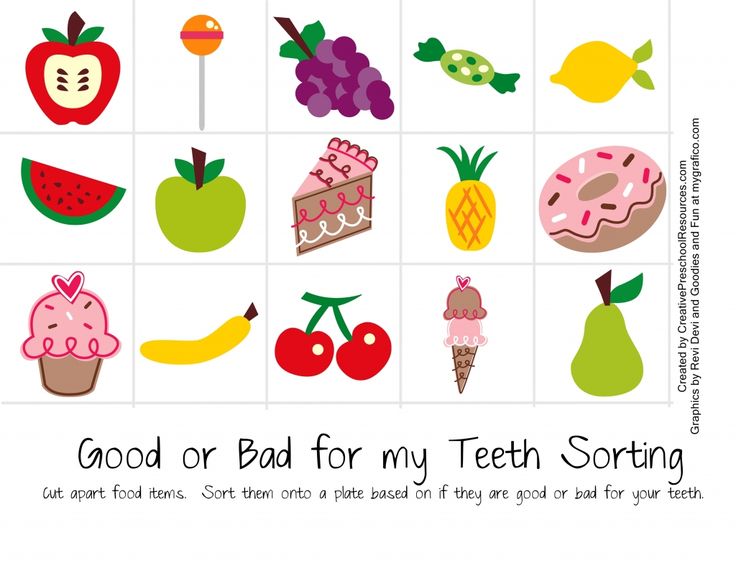 You can save it on Pinterest for later reading or share with someone you know.
You can save it on Pinterest for later reading or share with someone you know.
Thanks!
Ioana x
START READING HERE >>
Categories Baby food, Blog, Featured, The basics Tags baby led weaning, BLW, finger foods, first foods© 2022 WEANINGFUL • Built with GeneratePress
50 Delicious Foods for 1 year old with few teeth
When your baby’s first little tooth erupts, it gives rise to mixed emotions. On one hand, there’s joy, because your little one is growing and on the other hand, there’s horror, if you’re still breastfeeding! For most babies, the first tooth makes an appearance anywhere from four months onward and some babies are even born with teeth. On the other end of the spectrum, you may have a late bloomer, whose first tooth takes its own sweet time, maybe even till he’s a year old! Here are 50 foods for 1 year old with few teeth.
50 foods for 1 year old with few teeth
Fruit Finger foods for babies without teeth
Vegetable Finger Foods for Babies without teeth
Breakfast Recipes for Babies without Teeth
Lunch/Dinner Recipes for Babies without Teeth
Snack Finger Food Recipes for Babies without Teeth
Dessert recipes for Babies without Teeth
Tips for feeding babies without teeth/foods for 1 year old with few teeth
Frequently Asked Questions
Can you give finger foods to baby with no teeth?
What can my baby eat with 2 teeth?
What can I feed my 1 year old with no teeth?
What should 1 year old be eating?
Buy Healthy Nutritious Baby, Toddler food made by our own Doctor Mom !
But you’re obviously not going to wait till his first birthday to start solids! Since the recommended age for starting to wean is 6 months, many babies don’t depend upon their teeth to eat. Besides, the first teeth that appear are usually the front teeth, which aren’t used for chewing anyway. (Their gums are enough for that, which your poor nipples probably know by now!)
Besides, the first teeth that appear are usually the front teeth, which aren’t used for chewing anyway. (Their gums are enough for that, which your poor nipples probably know by now!)
For most babies till the age of 8 months, the puree and porridge phase goes by smoothly. But many Moms worry about their child’s diet after this phase, when they start thinking about introducing lumpier textures in their baby’s diet. Now you don’t need to worry if your baby still doesn’t have any teeth yet – we assure you, he’s not going to starve! Keep breastfeeding him for as long as you want, and as for foods, we’ve drawn up a list of 50 foods for babies without teeth , even if he’s still waiting for that first tooth!
50 foods for 1 year old with few teeth
Fruit Finger foods for babies without teeth
Most fruits can be fed directly, as long as they’re ripe. For starters, avoid the peel and ensure there are no seeds. For harder fruits, you can stew them for a few minutes to make them soft. These are finger foods for 6 month old baby with no teeth
These are finger foods for 6 month old baby with no teeth
1. Bananas – Can be fed as it is, just ensure that it is ripe enough
2. Avocado – Go for perfectly ripe avocados, or it’ll be too hard for baby
3. Peach – Feed ripe peaches directly
4. Mango – Go for ripe ones, but avoid the extremely squishy ones
5. Strawberries – Hull before offering to baby
6. Watermelon – Remove the seeds and ensure only the red parts are given
7. Pear – Peel and give baby; if it seems to hard, stew it for some time
8. Apple – Peel before giving baby; if the apple is too crunchy, stew it first
9. Muskmelon – Can be given directly, if it is ripe and soft enough
Vegetable Finger Foods for Babies without teeth
Vegetables are hard for babies without teeth to eat directly, so will require some steaming or boiling. Cook till just soft and not any more, or else they’ll turn into mush and won’t be the texture you’re looking for. These are good for finger foods for 7 month old baby with 2 teeth.
10. Carrot – steam or boil to make it soft, but don’t overcook
11. Cauliflower – Roast or steam; take care to prevent burning
12. Broccoli – Roast or steam lightly; it’ll crumble if overcooked
13. Potato – Boil or steam well till soft
14. Pumpkin – Cook for a short while till the cubes are just soft
15. Zucchini – Steam or cook lightly till soft
16. Beetroot – Steam or boil till quite soft
Breakfast Recipes for Babies without Teeth
Many of these breakfast ideas can be made for the whole family or older kids as well. Choose from Indian and other cuisines so your baby gets used to sweet and savory breakfasts. You can add fruit on the side as well. These are good foods for toddlers with few teeth
17. Eggless Apple Whole Wheat Pancake – You can skip the salt if you like
18. Banana Toast – You can also try almond milk
19. Waffles – You can use coconut milk or almond milk to make these
20. Vegetable Idli – You can start with only grated carrot and add more vegetables later on
21. Blueberry Oat Muffins – Substitute the milk with almond milk or baby formula
Blueberry Oat Muffins – Substitute the milk with almond milk or baby formula
22. Scrambled Eggs – You can use coconut milk instead, and skip the salt
23. Oat Cereal – You can add pureed fruit for more bulk
24. Baby Omelette – You can skip the milk or add formula
25. Steamed Dosa – Serve this with chutney powder for babies
26. Banana Pancakes – Make your own pancake batter and use
Lunch/Dinner Recipes for Babies without Teeth
Meals like lunch and dinner seem to be the biggest challenge for Moms of babies with no teeth, but there are many options. Adjust the salt content when you cook for baby – try adding spices instead to flavor the food. You can add all these foods in your 1 year old baby food menu
27. Flavored Paneer – Make sure the paneer is soft and not rubbery
28. Chicken Carrot Meatballs – You can also try plain chicken meatballs
29. Butternut Squash Risotto – You can use any short grained rice
30. Sweet Potato and Lentil Croquettes – Opt for cheese with less salt
31. Butternut Mac and Cheese – Skip the salt and curry, you can also replace the thyme with fresh herbs
Butternut Mac and Cheese – Skip the salt and curry, you can also replace the thyme with fresh herbs
32. Mini Aloo Paratha – Skip the salt; later you can try adding peas to the filling
33. Carrot Khichdi – You can also try this with beetroot
34. Bolognese Pasta – You can use chicken mince
35. Ghee Rice – Use homemade ghee for better results
36. Chicken Nuggets – You can use turkey or chicken here, be sure that you’re using boneless pieces
These are a few of best delicious foods for 1 year old with few teeth.
Snack Finger Food Recipes for Babies without Teeth
If you’re trying to get baby to eat on a schedule, you can offer her these snacks when she gets hungry in between. Try to balance it like this: if she hasn’t had any veggies all day, try with a veggie snack.These are perfect finger foods for 1 year old
37. Soft Cheese
38. Sweet Potato Fries – Serve with homemade tomato sauce
39. Cauliflower Nuggets – Skip the salt; substitute breadcrumbs with powdered baby cereal
40. Spinach Fritters – Skip the chillies and chilly powder
Spinach Fritters – Skip the chillies and chilly powder
41. Baked Avocado Fries – Substitute bread crumbs with powdered baby cereal
42. Pumpkin Sooji Fingers – Serve with homemade tomato sauce
43. Banana Oatmeal Fingers – You can also add a little of our Dry Fruit Powder
44. Broccoli Cheese Nuggets – Substitute bread crumbs with powdered baby cereal and use cheese with less salt
Dessert recipes for Babies without Teeth
While you don’t need to make a sweet dish a daily affair, once in a while even baby deserves a treat! Making them less sweet will prevent a sweet tooth later, whenever the teeth come in! These are perfect finger foods for 9 month old with no teeth
45. Carrot Cake – Skip the soda, and use almond or coconut milk
46. Samai Payasam – You can add a small amount of the dry fruit powder for taste
47. Fruit Yogurt – Avoid yogurt that is too sour
48. Frozen Applesauce Treats – Get the applesauce recipe here
49.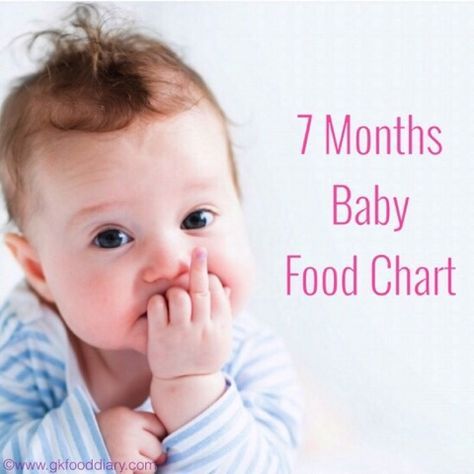 Egg Pudding – Substitute the milk with coconut milk or almond milk
Egg Pudding – Substitute the milk with coconut milk or almond milk
50. Wheat Halwa – Try not to make it too runny to give baby a chance to chew
Tips for feeding babies without teeth/foods for 1 year old with few teeth
1. Check the age recommendation on each recipe before feeding your baby.
2. Make sure you follow the 3 day rule with all new foods to be aware of any allergy.
3. Always be in the room with your baby when he’s eating.
4. With a new food, introduce small amounts at a time.
5. In case of any doubt, consult a doctor.
Most babies will find a way to gnaw on their food, chew on it at the back of their mouths and swallow. They generally have a natural gagging reflex to prevent choking, so they’ll spit out food that’s may be dangerous – don’t force it back down. With some trial and error, you’ll soon find that your baby is able to enjoy most foods – you’ll know when you see that loving toothless grin!
Hope this huge list of foods for 1 year old with few teeth was helpful for you, please let us know your queries in comments.
Frequently Asked Questions
Can you give finger foods to baby with no teeth?
Yes, we can give finger foods to baby with no teeth. As baby's gums are very strong, they can easily chew on soft finger foods with ease. In this article we have listed 50 foods for babies without teeth
What can my baby eat with 2 teeth?
Here are the list of foods that your baby can eat with 2 teeth - soft fruits, soft steamed vegetables, pancakes, soft dosas, mac and cheese, khichdi etc. we have compiled a interesting list of 50 foods for babies with few teeth
What can I feed my 1 year old with no teeth?
Here are the list of foods that you can give your 1 year old baby with no teeth - soft fruits, soft steamed vegetables, pancakes, soft dosas, mac and cheese, khichdi etc. we have compiled a interesting list of 50 foods for 1 year old baby with no teeth.
What should 1 year old be eating?
A 1 year old baby can eat all the foods that the family eats with less spice and salt
Buy Healthy Nutritious Baby, Toddler food made by our own Doctor Mom !
Shop now!What to feed your teeth? | Dentistry "Pro-Dent", Yekaterinburg
“Everyone says that health is the most valuable thing.
But no one observes this.”
Kozma Prutkov
In pursuit of a healthy lifestyle, we do not notice how unwittingly we harm our body with newfangled diets and exotic products. But not everything is as good for our teeth as it is commonly believed. Dental health is directly related to the quality of nutrition.
Probably everyone is familiar with the phrase: “Don't eat sweets, your teeth will be bad, don't gnaw seeds, you'll ruin your teeth, or drink milk, your teeth will be strong!”. So what do they “like” and “dislike” our teeth? How to “feed” them so that they remain strong and beautiful. nine0007
When we eat, we nourish not only our teeth and body, but also the microorganisms living in the oral cavity. Therefore, our diet must be designed so that the bacteria get less. Bacteria grow at the expense of refined sugar, fast-digesting carbohydrates, starch.
To protect the surface of the teeth from the destructive effects of external factors, it is necessary to adhere to a rational balanced diet and use natural fresh products.
Everyone knows that acid destroys the surface of the enamel, causes caries and leads to tooth decay. nine0007
Saliva, interacting with food debris and oral bacteria, forms acid, which has a detrimental effect on the structure of the enamel, destroying it. Soft food: cereals, buns, flour products, harm our enamel. When soft food is consumed, colonies of microorganisms are attached to the surface of such loose enamel, forming plaque, under favorable conditions, microorganisms multiply very quickly and over time, plaque thickens, forming tartar. Microorganisms ruthlessly destroy teeth, penetrating inside the body. There are 8 million microorganisms in one millimeter of tartar. There is a danger of the appearance of various inflammatory diseases of the oral cavity, periodontal diseases, the development of multiple caries. nine0007
Enamel thins with age. Our teeth benefit from food that strengthens the surface of the enamel. And this is not sparing food at all, in the form of cereals and buns, this food only brings harm rather than good.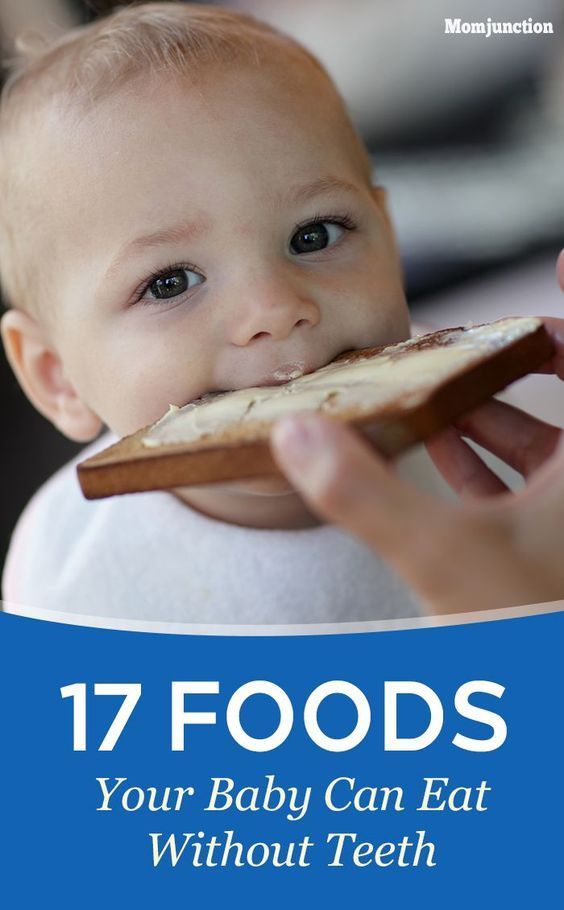 Teeth need solid food that will clean the surface of the enamel, and have a massage effect on the gums and periodontium.
Teeth need solid food that will clean the surface of the enamel, and have a massage effect on the gums and periodontium.
Our teeth need stress. Teeth devoid of chewing load “decrease”, and if they are not loaded from time to time, they will simply “leave” you! Teeth need to work - "chew". nine0007
Teeth prefer solid food. Coarse fiber foods support gum and ligament health by stimulating blood circulation. Chewing enhances salivation and provides protection against caries by flushing out food debris from the interdental spaces and neutralizing the action of acids. But this does not mean that you can chew constantly. The interval between meals should be 2.5-3 hours. During this time, saliva restores the PH balance of the oral cavity. Enamel can be restored only in between meals. nine0007
The most important thing is to eat less easily digestible carbohydrates and refined sugar.
Harm and benefit
What can harm our teeth?
Contrast eaters are at risk of rapid cracking and chipping of the enamel, making it very weak.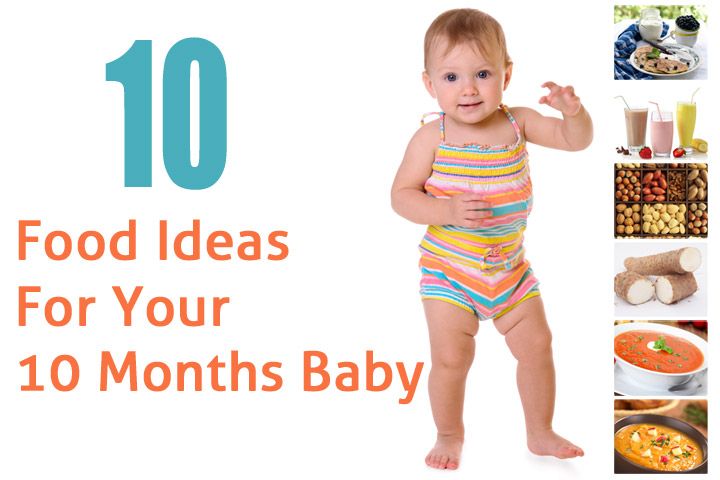 It is necessary to think about whether it is worth drinking hot coffee with cold ice cream, or drinking hot tea with a hot pie in the cold.
It is necessary to think about whether it is worth drinking hot coffee with cold ice cream, or drinking hot tea with a hot pie in the cold.
Those with a sweet tooth who like to chew toffee, long-lasting caramels in their mouths should remember that sugar, concentrates, flavor enhancers and a viscous base that gets stuck between the teeth, sticks to fillings and is able to tear it off the tooth wall, destroys tooth enamel, leading to the formation of multiple caries and darkening of the teeth. nine0007
Now it has become fashionable to eat freshly squeezed juices, “fresh”.
Of course, citruses are fruits that contain a lot of very useful vitamin C, pectin for our body, they have antioxidant properties.
Of course, small amounts of citrus can be consumed, but the citrus diet should be limited to a few days and a few slices a day. And after eating these products, it is recommended to rinse your mouth with water, but do not brush your teeth immediately. nine0007
It should not be forgotten that the juice of pleasant-tasting fruits contains a large amount of citric acid, which quickly destroys the enamel, making it brittle.
The same applies to lovers of lemonade, carbonated cocktails, cola, water with lemon, soy sauces. The composition of such drinks includes sugars, carbon dioxide, preservatives, acids and dyes, vinegar.
It must be remembered that these drinks lead to increased sensitivity of the teeth and staining of the enamel in a yellowish and even grayish color. nine0007
I cannot but mention the dangers of smoking: healthy teeth and tobacco are incompatible. When smoking, the secretion of saliva decreases, the formation of tartar is accelerated. Resins, which are contained in any form of cigarettes, even electronic ones, settling on the surface of the enamel, destroy its structure. The components of tobacco smoke impair blood circulation in the gums and mucous membranes, causing atrophy of the mucous membrane, resulting in the development of gingivitis, which subsequently turns into chronic periodontitis. It is impossible not to note the change in the color of the teeth and oral mucosa. In smokers, the teeth become dull with a yellowish-brownish tint, and the mucous membrane becomes rough and dry. Harmful chemicals found in tobacco interfere with treatment and slow down the healing process. nine0007
In smokers, the teeth become dull with a yellowish-brownish tint, and the mucous membrane becomes rough and dry. Harmful chemicals found in tobacco interfere with treatment and slow down the healing process. nine0007
The most useful for tooth enamel are products containing calcium, fluorine and phosphorus.
To strengthen teeth, it is necessary to include raw vegetables, herbs, seafood, dairy products, berries, eggs in the diet.
Fermented milk products, milk, cheese, cottage cheese are rich in calcium, fluorine, vitamins A, B, D, which can strengthen enamel and increase salivation. Saliva protects the tissues of the oral cavity, teeth and gums from the penetration of pathogenic microorganisms and the occurrence of inflammation. nine0007
The healthiest dairy product is cheese. It is rich in casein and phosphates, which restore tooth enamel. Chewing cheese does not stimulate acid production. Hard varieties of salted cheese have not only a mechanical cleaning of the surface of the teeth from the remnants of soft food, but also the salt present in its composition, helps to increase the secretion of saliva, which is able to neutralize pathogenic microflora, salt has an antiseptic, antimicrobial and anti-inflammatory effect. So cheese acts as a very good anti-carious product. nine0007
So cheese acts as a very good anti-carious product. nine0007
Raw vegetables are rich in a complex of microelements and fiber, which, when chewed, contribute to a massage effect on the gums and periodontium. Fiber provides mechanical cleaning of the surface of the teeth from the remnants of soft food. So a radish, cucumber, hard cheese or a slice of an apple or pear can clean your teeth from soft plaque after eating.
Green crops parsley, dill, mint, onion, celery contains vitamins C, A, E, B, trace elements, folic acid, beta-carotene, which strengthen the blood vessels of the mucous membrane and prevent gum bleeding, have antibacterial properties , disinfect the oral cavity and freshen breath. nine0007
A sprig of parsley is able to enrich tooth enamel with easily digestible calcium, destroys pathogenic microorganisms and perfectly eliminates bad breath.
All varieties of fish are very rich in phosphorus, calcium, fluorine, selenium, iodine, microelements, vitamin B1, D, which are necessary for healthy teeth and gums, these microelements are a source of building and strengthening bone tissue.
Berries are a natural source of vitamins B, C, H, PP, E, calcium, phosphorus, beta-carotene, pectin. They have a bactericidal effect, block the action of pathogenic microorganisms and have a preventive effect on the development of caries. nine0007
Eggs are very rich in vitamins D, A, B, PP, E, calcium, phosphorus. The egg shell contains 93% calcium carbonate, which is completely and easily absorbed by the body.
Calcium water can be made from eggshells. The egg is pre-washed with soap. The shell is soaked in water for several hours. In the future, an infusion, decoction or tea can be prepared from calcium water. Teeth also need iron and vitamin B12, a lack of which can cause thinning of the mucous membrane layer leading to inflammation of the tongue and ulcers. Meat is the source. nine0007
Pine nuts accelerate the process of cell regeneration, promote the restoration of bone tissue, due to the presence of vanadium in its composition, normalize the state of nerve fibers. Walnut partitions will help relieve the inflammatory process in periodontitis, providing an antimicrobial effect. The essential amino acids, folic acid, magnesium, vitamin B6, cashew nuts in its composition can relieve toothache, strengthen tooth enamel, and also destroy bacteria. Almonds relieve spasm of blood vessels and anesthetize well. nine0007
Walnut partitions will help relieve the inflammatory process in periodontitis, providing an antimicrobial effect. The essential amino acids, folic acid, magnesium, vitamin B6, cashew nuts in its composition can relieve toothache, strengthen tooth enamel, and also destroy bacteria. Almonds relieve spasm of blood vessels and anesthetize well. nine0007
It should be noted products that can have a brightening effect on tooth enamel.
For lovers of coffee, strong black, green tea, smokers, as well as lovers of red wine and blueberries, the enamel darkens over time, pigmentation appears. It is quite difficult to lighten such enamel at home, many means are aggressive and even more capable of destroying it. There are products that, with regular use, can safely get rid of darkening and yellowness. nine0007
For a natural lightening effect, include the following foods in your diet: apples, broccoli, nuts, oranges, mint. A daily handful of nuts eaten is able to clean the enamel from plaque and stains, strawberries contain acids that destroy the dark plaque on the enamel.
Of course, it is impossible to achieve such a whitening effect as from an expensive professional whitening procedure, as at a dental appointment, by using products.
Due attention to our nutrition will help keep teeth and gums healthy and strong, and visit the dentist's office only for preventive purposes.
Healthy teeth are the guarantee of beauty and good mood!
The article was prepared by a dentist of the first category Kolchurina Elena Valerievna
7 products that are undesirable for children under one year old
Of course, modern mothers know that babies should not be given sausages, soda and cream cakes. What else can not eat children under one year old? We made a list of 7 less obvious foods. nine0007
1. Salt
Excess salt in the diet is harmful to the baby's kidneys and can lead to swelling and dehydration. Of course, a lack of salt is also not useful, but in real life, with a normal diet, it practically does not occur: salt is contained in sufficient quantities in most foods, and there is no need to add salt on purpose. And if for us, adults, baby purees and cereals without salt and sugar seem tasteless and disgusting, don’t worry, for a baby, the situation is completely different. nine0007
And if for us, adults, baby purees and cereals without salt and sugar seem tasteless and disgusting, don’t worry, for a baby, the situation is completely different. nine0007
The taste perception of young children is not yet spoiled by excessively sweet and salty foods, flavorings and flavor enhancers. If your child refuses mashed broccoli, then most likely he just does not like the taste and texture of broccoli, and not at all the lack of salt.
2. Sugar
Everyone knows the dangers of excess sugar - dental problems, obesity, associated cardiovascular diseases and the risk of developing diabetes. However, it can be very difficult to refuse a cookie or candy to a child familiar with the sweet taste, and tears are usually inevitable. What to do? nine0007
The secret is simple - introduce foods with added sugar into your baby's diet as late as possible, at the earliest in the year, although it is better to wait until two years. The National Nutritional Optimization Program for Children aged 1 to 3 years recommends limiting sugar in the diet of babies 1 to 3 years of age to 25-30 grams per day, and should take into account the sugar contained in special baby products, juices, yogurts, etc.
3. Honey
It would seem that honey is a wonderful and healthy alternative to sugar, so why is it not recommended for babies under one year old? In fact, the reasons some. First, honey can contain spores bacteria Clostridium botulinum. The immune system of adults and children older people can easily cope with them, but in babies they can cause a deadly disease called infantile botulism. nine0007
Secondly, honey is the strongest allergen, so it is better to postpone acquaintance with it until a later age.
4. Fruit juices and drinks
American Academy of Pediatrics (AAP) released in 2017 New recommendations for adequate intake of fruit juices in infants, young children and adolescents who begin with advice to completely avoid fruit juice for feeding infants life. According to AAP, excessive juice consumption can lead to diarrhea, overeating or, conversely, malnutrition, as well as to occurrence of dental caries*. At the same time, babies can and should be offered Whole fruit, mashed or pureed. nine0007
nine0007
A various fruit drinks and nectars in addition to natural sugar from fruits often contain added sugar, which makes them perfectly unsuitable for feeding babies up to a year.
Breeding of juices and nectars with water does not completely solve the problem, since it does not reduce dental risks. If your child refuses to drink water, try compotes and fruit or herbal teas.
5. Foods that are easy to choke on
The danger of a product to children is determined by several characteristics: consistency, shape, and size. Most often babies gagging slippery, round, sticky, fibrous and hard products. nine0007
The most dangerous are all round and large enough to block the airways: lozenges, grapes, cherry tomatoes, nuts**. Not far behind in sad dangerous food rating other candies (especially sticky ones), fish bones and meat and, in fact, the meat itself ***.
Remember that theoretically a child can choke on any food, so never leave your child unsupervised eating.
6. Egg white
Have you ever wondered why in all complementary feeding schemes is it the yolk, not the whole egg? Nothing surprising: egg protein is one of the strongest allergens. Up to a year is better limit the baby to only the yolk, and introduce the protein a little later.
Only make sure the eggs are thoroughly cooked. Raw and half-raw eggs may contain a bacterium that causes salmonellosis, a disease deadly for young children.
7. Cow and goat milk nine0105
Surprised? Whole cow's milk is the main cause of allergies in children under one year old. In addition, it contains a large amount of lactose, milk sugar, which some babies have difficulty digesting due to the fact that their gastrointestinal tract is not yet sufficiently developed. There are studies linking the early introduction of animal milk as a substitute for mother's milk or infant formula with an increased risk of iron deficiency anemia and type 1 diabetes.






